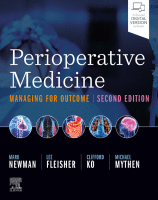Physical Address
304 North Cardinal St.
Dorchester Center, MA 02124

Introduction The Third International Consensus Definitions for Sepsis and Septic Shock (Sepsis-3) recently defined sepsis as a “life-threatening organ dysfunction caused by a dysregulated host response to infection.” Sepsis is a medical emergency with mortality rates of 18% to 29%…

After uncomplicated neurosurgical procedures, patients are often admitted to an intensive care unit (ICU) for close observation. In the large majority of cases, this level of care is warranted as a means to monitor the patient’s neurologic function carefully and…

Care of patients with multisystem trauma is challenging. Although well-defined constellations of injury exist, ultimately each patient is unique in preinjury health, injury complex, and postinjury management. Because many injuries are managed nonoperatively, many patients have no postoperative phase. However,…

Solid organ transplantation is the surgical procedure in which an organ is removed from a one body (donor) and placed into another body (recipient). Solid organs that have been successfully transplanted are liver, kidneys, pancreas, intestine, heart, and lungs. Before…

The United States is experiencing considerable growth in its elderly population. In 2050, the population of elderly people aged 65 years and over is projected to be 83.7 million, almost double the estimated population in 2012. As a result, an…

Introduction Major abdominal surgery encompasses a broad range of operations with a wide variety of procedures that fall under this category. The perioperative management after a low-risk procedure such as a herniorrhaphy is going to be different from the management…

The focus of this chapter is on concepts in the perioperative period germane to general thoracic surgery. Areas that will be covered include preoperative pulmonary reserve assessment, prevention of postoperative pulmonary complications with emphasis on smoking cessation and the current…

Each year, more than 500,000 cardiac surgery procedures are performed in the United States, and, until recently, this number continued to grow annually. Cardiac surgical patients are routinely admitted to the intensive care unit (ICU) for monitoring of recovery from…

Caring for the pregnant patient who requires a surgical procedure is challenging. The effects of anesthetics on the developing fetus continues to evolve and issues concerning the pregnant patient have changed. The most important point to remember when performing anesthesia…

Introduction Maternal safety surrounding nonobstetrical surgery, labor, and delivery has been seen as one of the greatest triumphs of 20th century medicine. Within living memory, nearly 1% of women in the United States died during or in the immediate aftermath…